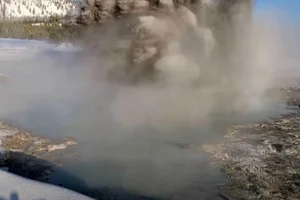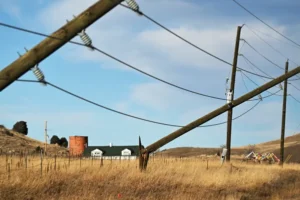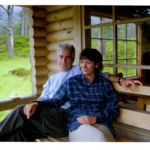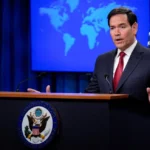Tesla’s Autopilot Caused a Fiery Crash into a Tree, Killing a Colorado Man, Lawsuit Says
- Published In: Other News & Features
- Last Updated: May 11, 2024

This image provided by Colorado State Patrol shows a Tesla Model 3 that crashed on May 16, 2022 in Clear Creek County, Colo. The widow of a man who died after his Tesla veered off the road and crashed into a tree while he was using its partially automated driving system in Colorado in 2022 is suing the car maker, claiming its marketing of the technology is dangerously misleading. The Autopilot system prevented Hans Von Ohain from being able to keep his Model 3 Tesla on the road and he died after the car burst into flames after hitting the tree, according to the lawsuit filed by Nora Bass in Colorado state court on May 3, 2024. A passenger was able to escape, it said. (Colorado State Patrol via AP)
BY COLLEEN SLEVIN
DENVER (AP) — The widow of a man who died after his Tesla veered off the road and crashed into a tree while he was using its partially automated driving system is suing the carmaker, claiming its marketing of the technology is dangerously misleading.
The Autopilot system prevented Hans Von Ohain from being able to keep his Model 3 Tesla on a Colorado road in 2022, according to the lawsuit filed by Nora Bass in state court on May 3. Von Ohain died after the car hit a tree and burst into flames, but a passenger was able to escape, the suit says.
Von Ohain was intoxicated at the time of the crash, according to a Colorado State Patrol report.
The Associated Press sent an email to Tesla’s communications department seeking comment Friday.
Tesla offers two partially automated systems, Autopilot and a more sophisticated “Full Self Driving,” but the company says neither can drive itself, despite their names.
The lawsuit, which was also filed on behalf of the only child of Von Ohain and Bass, alleges that Tesla, facing financial pressures, released its Autopilot system before it was ready to be used in the real world. It also claims the company has had a “reckless disregard for consumer safety and truth,” citing a 2016 promotional video.
“By showcasing a Tesla vehicle navigating traffic without any hands on the steering wheel, Tesla irresponsibly misled consumers into believing that their vehicles possessed capabilities far beyond reality,” it said of the video.
Last month, Tesla paid an undisclosed amount of money to settle a separate lawsuit that made similar claims, brought by the family of a Silicon Valley engineer who died in a 2018 crash while using Autopilot. Walter Huang’s Model X veered out of its lane and began to accelerate before barreling into a concrete barrier located at an intersection on a busy highway in Mountain View, California.
Evidence indicated that Huang was playing a video game on his iPhone when he crashed into the barrier on March 23, 2018. But his family claimed Autopilot was promoted in a way that caused vehicle owners to believe they didn’t have to remain vigilant while they were behind the wheel.
U.S. auto safety regulators pressured Tesla into recalling more than 2 million vehicles in December to fix a defective system that’s supposed to make sure drivers pay attention when using Autopilot.
In a letter to Tesla posted on the agency’s website this week, U.S. National Highway Traffic Safety Administration investigators wrote that they could not find any difference in the warning software issued after the recall and the software that existed before it. The agency says Tesla has reported 20 more crashes involving Autopilot since the recall.













